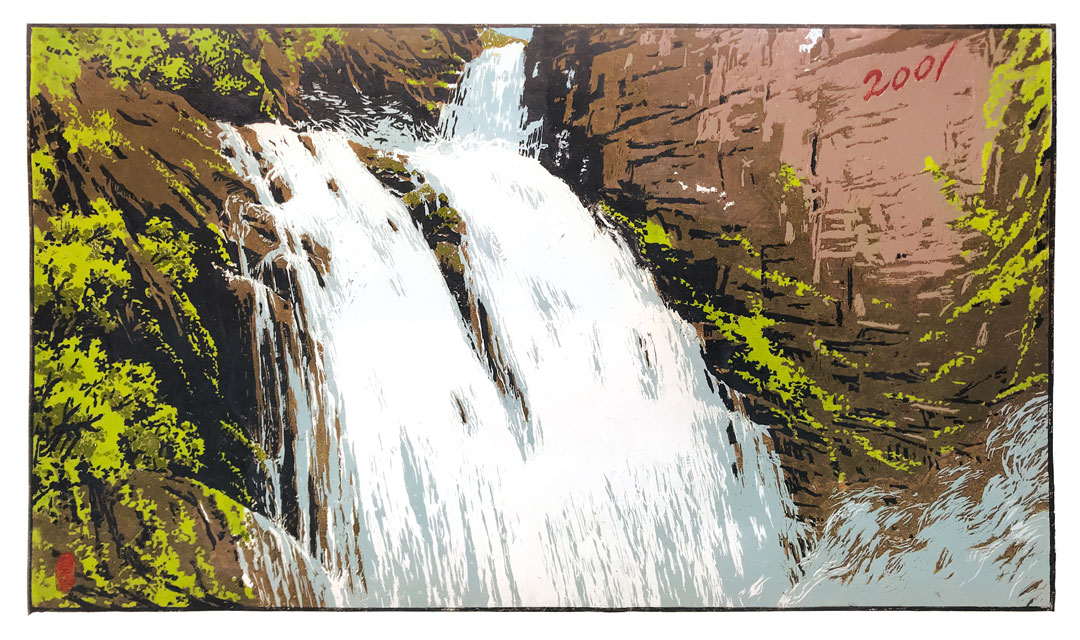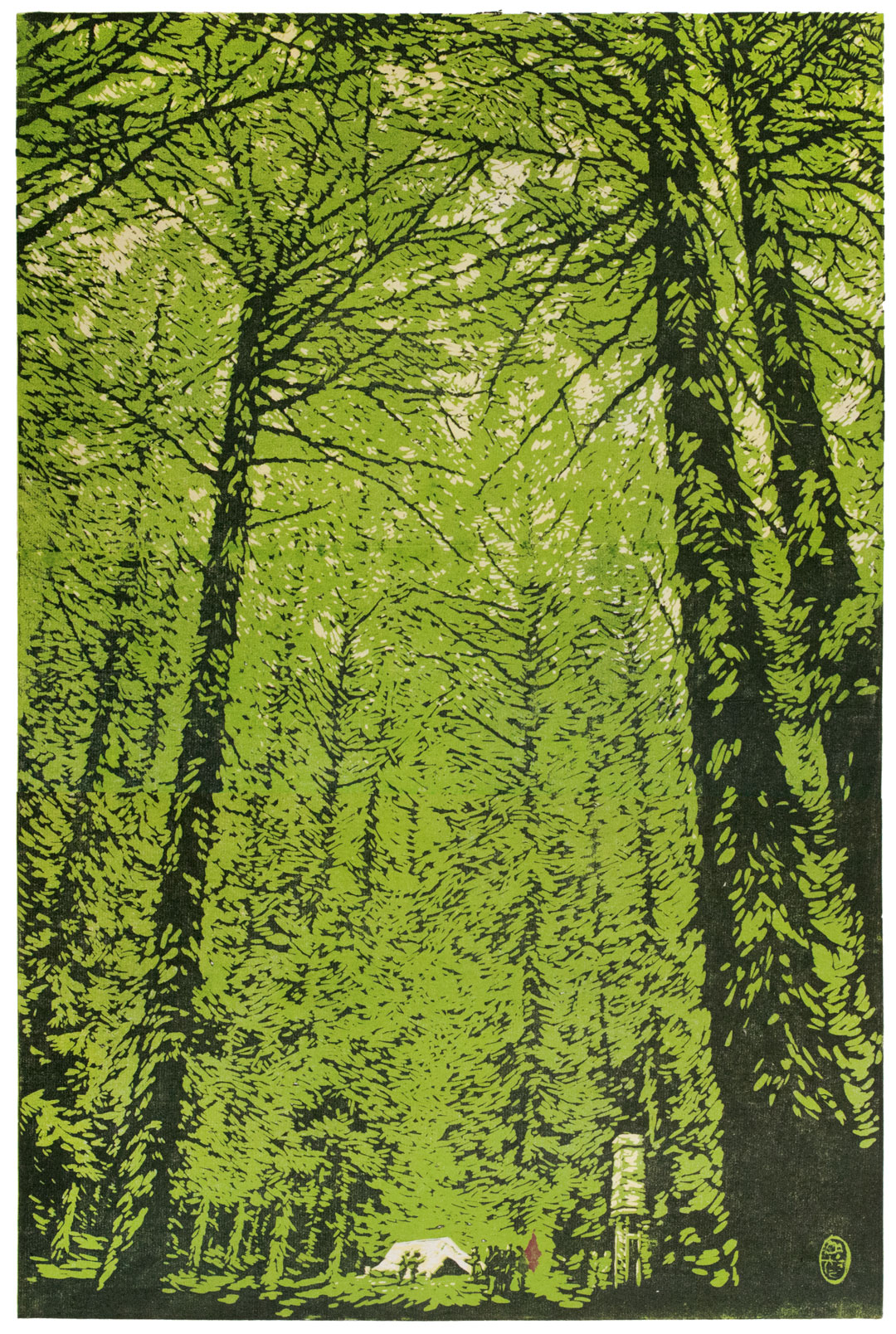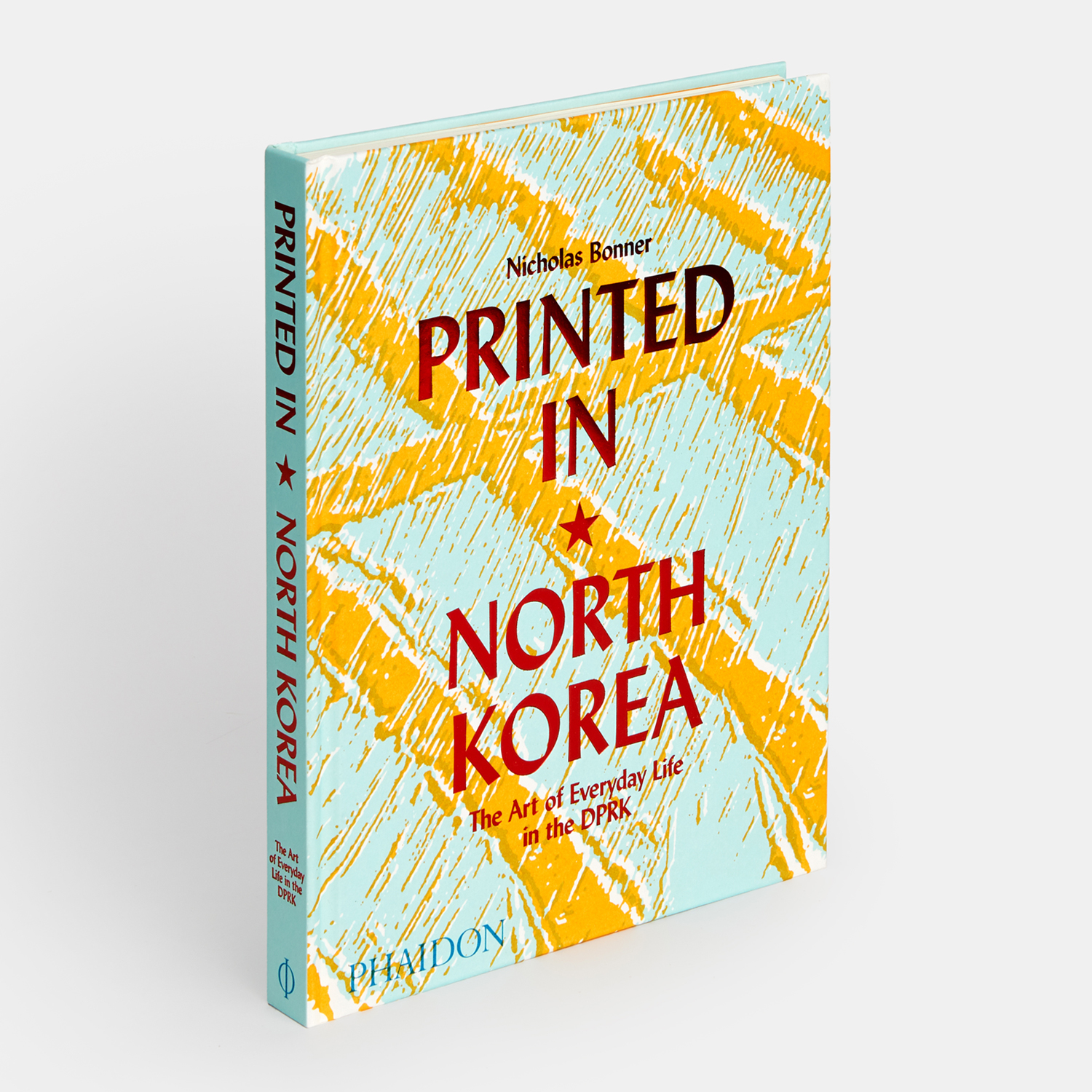
Landscapes in North Korea are a little bit different...
In the Democratic People’s Republic of Korea even a forest or a waterfall can be political, as our new book reveals
In North Korean politics, there’s no such thing as splendid isolation. “Though a seascape or landscape might appear as if it were created for its aesthetic value only,” explains our new book Printed in North Korea: The Art of Everyday Life in the DPRK, “it is likely to be imbued with revolutionary meaning.”
Indeed, scenes depicting the natural beauty of this rugged, mountainous country are highly valued within official North Korean artistic circles, explains our book, and are second only to "theme paintings or images that document the life and struggles of the Leaders, the revolutionary history of the Workers’ Party of Korea, the development of the Workers’ Paradise and finally the struggle for Korean unification."
Why are these apparently neutral images so highly prized? Because, the text explains, “landscape paintings and prints, for their part, evoke the beauty of a blessed nation, graced by the presence of the Leaders.”
Many depict places of important national significance. For example, Kim Kyong Chol’s 1999 work, Summer at Chongbong might look like merely a pleasant, sylvan scene, but the little tent-like detail in the centre tells a different story.

“The Chongbong Bivouac is where the Korean People’s Revolutionary Army (KPRA) spent their first night on the way to the northern area of Musan in 1939 from where the anti-Japanese guerrilla army of Kim Il Sung is considered to have based themselves and fought to liberate the country,” says our new book. “These areas are home to the iconic ‘slogan trees’: pine or larch trees on which partisans stripped bark and wrote patriotic slogans. Many of these slogan trees keep being ‘discovered’ to this day. When found they are protected from the elements with glass cases or canvas covers.”
You can see one of the protected trunks in this picture. It is centre right, and looks a bit like a low, canvas-covered water tower.
The Ulim Waterfall, as seen in the 2006 work by Jang Su Il (top), tells a similar, albeit more recent story. While locals have admired the booming falls for centuries, they were ‘rediscovered’ in 1999 by the North Korean head of state Kim Jung Il, and has since been redeveloped into a tourist destination. ‘2001’, written onto the rock face in this picture, is the year this government-approved resort opened.
The churning water might be entirely natural, but the sound of the falls has become, thanks to the DPRK, a resonant, nationalistic symbol. “The song Echoes of the Ulim Falls tells how the falling waters are ‘banging their hearts to make the DPRK a strong and prosperous country’,” explains our new book.

To see many more images like this, order a copy of Printed in North Korea here. This incredible collection of prints dating from the 1950s to the twenty-first century is the only one of its kind in or outside North Korea.
Depicting the everyday lives of the country's train conductors, steelworkers, weavers, farmers, scientists, and fishermen, these unique linocut and woodblock prints are a fascinating way to explore the culture of this still virtually unknown country. Together, they are an unparalleled testament to the talent of North Korea's artists and the unique social, cultural, and political conditions in which they work.